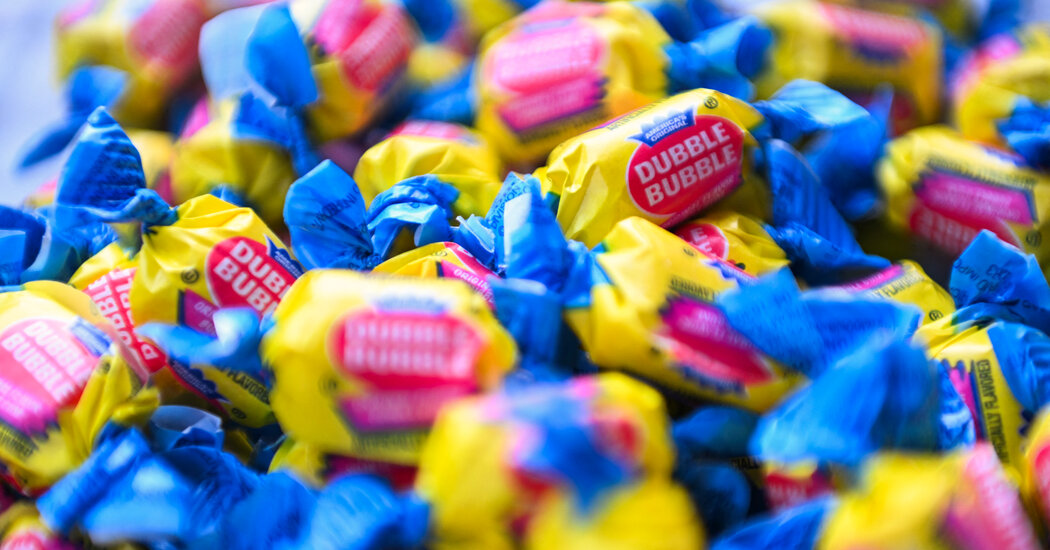
The Food and Drug Administration on Wednesday banned the use of red dye No. 3 in foods, drinks and drugs, more than three decades after the synthetic dye was found to cause cancer in male laboratory rats.
The dye, a petroleum-based additive, has been used to give candy, soda and other products their vibrant cherry-red hue. Consumer advocates said the FDA’s decision to revoke the authorization was long overdue, given the agency’s decision in 1990 to ban the chemical’s use in cosmetics and topical medications.
Under federal rules, the FDA is prohibited from approving food additives that cause cancer in humans or animals.
“This is wonderful and long overdue news,” said Melanie Benesh, vice president for government affairs at the Environmental Working Group, one of several organizations that have petitioned the agency to take action on the additive. “Red dye 3 is the lowest hanging fruit when it comes to toxic food dyes that the FDA should address.”
Starting in 2027, companies will have to start removing the dye from their products. Imported foods sold in the United States should also have the additive removed.
Although the dye is still used in hundreds of products, many companies have switched to other food colors, a move that accelerated after California in 2023 became the first state to ban Red 3 along with three other food additives that have been linked to diseases. The dye has also been linked to health problems for children.
In announcing the ban, the agency downplayed the risks to humans, saying that researchers had not found similar cancer risks in studies involving animals other than male rats. Claims that the use of red dye no. 3 “in foods and ingested drugs puts people at risk is not supported by available scientific information,” Jim Jones, FDA deputy commissioner for human foods, said in a statement.
Sarah Gallo, senior vice president of product policy and federal affairs for the Consumer Brands Association, a trade group, said food and beverage companies will abide by the agency’s decision. “The revocation of the authorized use of Red No. 3 is an example of the FDA using its risk- and science-based authority to review the safety of products on the market,” he said.
First approved for use in foods in 1907, red dye no. 3 was banned in cosmetics in 1990 by US regulators. At the time, the FDA cited an industry-led study that found the chemical caused thyroid cancer in male rats, but estimated it could cause cancer in fewer than one in 100,000 people. In addition to banning dyes in cosmetics, the agency has pledged to do the same with foods.
It is already banned for food use in Europe, Australia and New Zealand, with one notable exception: maraschino cherries.
Although many food manufacturers have adopted natural food dyes, including those extracted from beets, red cabbage and insects, red dye no. 3 is still found in dozens of consumer products, such as candy corn, yellow rice, mashed potatoes and children’s nutritional shakes. Consumers can find out whether a product contains the dye in the U.S. Department of Agriculture’s branded foods database and another created by the Environmental Working Group.
Artificial colors and food additives have been a prime target for Robert F. Kennedy Jr., President-elect Donald J. Trump’s pick as health secretary, whose confirmation hearings before the Senate will begin soon.
Although health and consumer advocates praised the agency’s decision to ban the red dye No. 3, said the decade-long delay highlighted systemic flaws in federal oversight of food additives.
Thomas Galligan, the principal scientist specializing in food additives and supplements at the Center for Science in the Public Interest, said the agency’s failure to act sooner was partly the result of industry opposition to the ban, but it also reflects the chronic underfunding of food safety at the FDA.
“The FDA has a track record of allowing unsafe chemicals to remain in our food supplies long after evidence of harm has emerged,” he said. “And part of the reason is that the agency does not have a robust system for re-evaluating the safety of already approved chemicals.”
He added: “Much of the blame also falls on Congress for failing to provide the authority and resources the FDA needs to do its job to protect public health.”
According to the organization, more than 200,000 pounds of Red 3 were used in food and pharmaceutical products in 2021. The center advises consumers to avoid all numbered dyes, including Yellow 5 and Red 40, both derived from petroleum.
The FDA has acknowledged weaknesses in its oversight efforts. Last year, the agency announced a reorganization of its human nutrition programs to more effectively address health and safety challenges in the food and agricultural sector.
Brian Ronholm, director of food policy at Consumer Reports, who filed a petition with the FDA last year calling for a ban on the red dye No. 3, said there are still dozens of other chemical food additives in the nation’s food supply.
“Many synthetic food colors are allowed in foods but have not been reviewed for safety by the FDA in decades, despite recent studies that have linked the chemicals to serious health problems,” he said. “It’s time for the FDA to catch up with the latest scientific findings and eliminate these harmful chemicals from our food.”
